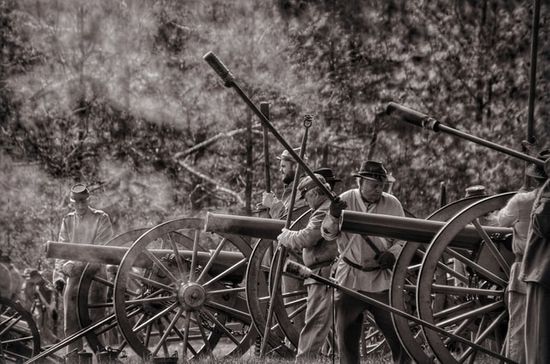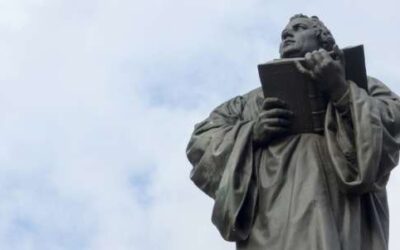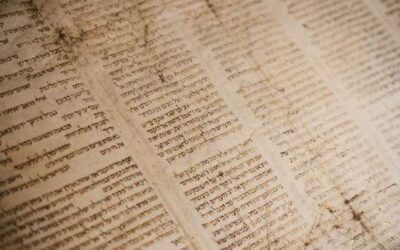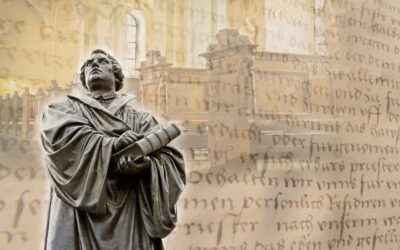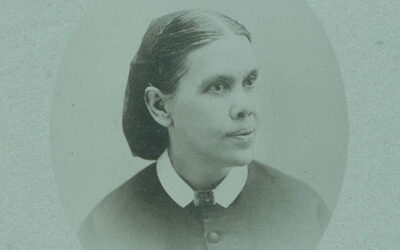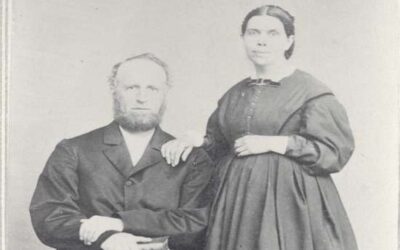William Miller was a farmer in the early 1800s who gave his life to God and began intensely studying his Bible. This study led him to some unexpected conclusions, namely that Jesus Christ’s Second Coming would happen in his lifetime—in 1843 or 1844. As Miller began sharing this news, he sparked a religious revival in North America called the Millerite Movement.
So, who was William Miller and what led him to this conclusion? Let’s look at:
- William Miller’s background
- William Miller and the Millerite Movement
- His life after Jesus didn’t return
- His connection to the Seventh-day Adventist Church
We’ll start with the backstory of a humble man who never intended to start a major religious movement.
William Miller’s background
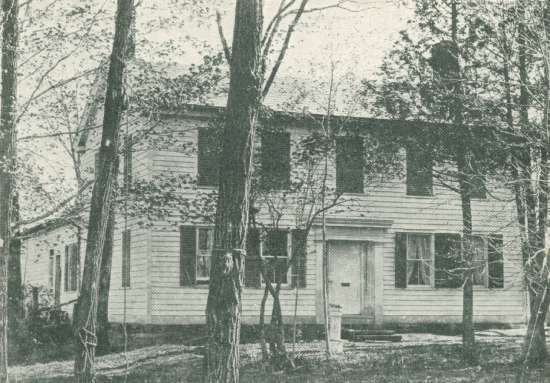 William Miller was born in Pittsfield, Massachusetts, in 1782. He was the first of William and Paulina Miller’s 17 children. Soon after his birth, the family moved to Low Hampton, New York.
William Miller was born in Pittsfield, Massachusetts, in 1782. He was the first of William and Paulina Miller’s 17 children. Soon after his birth, the family moved to Low Hampton, New York.
Miller’s father, who had served as a captain in the Revolutionary War, was not very religious. His wife, though, was a devout Baptist, whose prayers were not lost on her eldest son.1
As a child, Miller showed intellectual promise and curiosity. As soon as he learned to read, he began to do so every night with books borrowed from neighbors.2
William Miller’s marriage and occupation
In 1803, William Miller married Lucy Smith, with whom he had five children. He continued farming and became involved in the civil matters of his community, serving as constable, deputy sheriff, and justice of the peace.
Despite his busy life, he found time for his favorite pastime—reading. His curiosity sparked some questions about his beliefs.3
Becoming a deist
After their marriage, the Millers settled in Poultney, Vermont, where Miller became acquainted with deists. Deists believed in God but rejected the Bible and viewed Him as a distant deity that left the world to run on its own. This kind of God was not personally involved with His created beings.
Miller had always wondered about some perplexing passages in the Bible and had never received solid answers from preachers. If the Bible didn’t have answers, perhaps deism was the solution.
He began reading books by deistic philosophers, but his mind was not at ease. He struggled with what they believed about the afterlife—that humans cease to exist.4
Questions of eternity and death became even more real when he faced the horrors of war.
Returning to Christianity
William Miller became a captain in the army during the War of 1812 between the United States and Great Britain. His experiences during that time led him back to Christianity and belief in a personal God.
While he served in the war, the Americans experienced an unexpected victory at the Battle of Plattsburgh.5 They were far outnumbered and should have lost, yet they didn’t. In the same battle, a shell exploded near Miller, barely missing him.6
After the war, his close brush with death caused him to confront his own mortality. He took a special interest in God and wondered what His plan could be for his life.7
Moving back to Low Hampton, New York, he began attending the Baptist Church—but only when his uncle, the church minister, gave the Sunday sermon. When his mother asked him why he didn’t come at other times, he complained about how the deacons read the sermons: “When Uncle’s away, Mother, why don’t they let me read it?”
His mother took his words to heart, and the next time his uncle was away, Miller did read the sermon. And many more times after. As he did so, the words of Scripture began to have an impact on him.8
During one of these sermons, conviction pierced his heart so strongly that he could not finish. That day in 1816, he realized his need for a Savior. He began to spend time specifically reading the Bible to know this personal God.
Here’s how he puts it:
“When [I was] brought almost to despair, God by His Holy Spirit opened my eyes. I saw Jesus as a friend, and my only help. … And the Scriptures, which before were dark and contradictory, now became the lamp to my feet and light to my path.”9
“But how do you know the Bible is the Word of God?” his deist friends challenged him.10
This question caused him to study even more, and then he discovered a prophecy that would lead to a worldwide religious movement.
William Miller and the Millerite Movement
William Miller’s deep dive into the Bible led him to prophecies about the Second Coming of Jesus. The more he studied, the more he became convinced that Jesus was coming soon—most likely in 1843 or 1844.
As he shared this with others, a religious revival, known as the Millerite Movement (also called the Advent Movement), swept across the country.
What exactly did he uncover?
The 2,300-day prophecy

Photo by Sincerely Media on Unsplash
Miller’s biographer, Sylvester Bliss, in Memoirs of William Miller, gives us a look into his Bible study journey.11 Miller began his Bible study to respond to the challenge of his deist friends. He decided he would study verse by verse, using the margin of his Bible and a concordance to find cross-referenced verses. Eventually, he uncovered a prophecy in Daniel 8:14 that seemed to point to the Second Coming of Christ and the judgment day:
“For two thousand three hundred days; then the sanctuary shall be cleansed” (Daniel 8:14, NKJV).
Like other Christians of his time, he thought that the sanctuary referred to the earth. The cleansing, then, had to be its cleansing by fire when Jesus returned, as described in Revelation 21:8.
Miller believed, as did many theologians before him, that a day in Bible prophecy equals one year (Numbers 14:34; Ezekiel 4:6). This meant that this prophecy was referring to 2,300 literal years.
In addition, he realized that Daniel 9 connected with Daniel 8 and provided a starting point for the prophecies in both chapters: 457 BC—the time of the decree to rebuild Jerusalem.
All that remained was a math calculation. Counting 2,300 years from 457 BC, Miller came to 1844.
Could it be that Jesus was coming in less than 25 years? That the end of the world was so close?
Miller wasn’t sure, so he kept it to himself as he continued to study out objections.
The call from God
After about 13 years of study, Miller was growing more convinced in his Bible studies on Daniel 8:14. He wrestled with the message God was giving him: “Go and tell the world of their danger.”
“I can’t go, Lord.” He felt inadequate to speak about the Bible in public since he had little or no theological training and was not ordained as a minister. He was just a farmer who loved to study the Bible.
But to ease his conviction, he decided: “If I should have an invitation to speak publicly in any place, I will go and tell them what I find in the Bible about the Lord’s coming.”12
A sense of peace came over him. He didn’t dream that anyone would actually invite him to preach!
Half an hour later, a young man knocked at the door and asked if Miller would come that Sunday and share about the Second Coming.
Keeping his promise to God, Miller accepted the invitation, and revival took place in the church. Soon another invitation came, and another. So many requests poured in that he couldn’t keep up.
Thinking to solve this problem, he published a book in 1832.13 But this only served to increase interest.
In 1839, he partnered with Joshua V. Himes, a well-known reform leader from Boston, who began promoting his message. One way Himes did this was by starting a periodical called the Signs of the Times.14
Miller also received help from Apollos Hale to create the 1843 prophecy chart that showed the Bible prophecies that ended in 1843.15
Though he had not intended to, he had begun a religious revival, just after the tail end of the Second Great Awakening, that spread across the United States and even the world. Through it all, he remained a humble Bible student and follower of Jesus.
But you may be wondering:
Did he ignore plain passages in the Bible that say no one knows the day nor the hour of Jesus’ coming (Mark 13:32)?
No, he did consider those passages. For this reason, he never set a definite time for the Second Coming but only said that he believed it would happen sometime in 1843 or 1844. Later on, one of
Miller’s followers set the date of October 22, 1844.16
Miller was skeptical of this exact date for Jesus’ coming. It wasn’t until the beginning of October that he became convinced that October 22nd “was at a probable point of time.” He believed it was “a work of God” because of the way people were confessing their sins and earnestly searching their hearts as they waited for Jesus to come.17
Did William Miller claim to be a prophet?
When speaking about Jesus’ coming and the judgment day, William Miller never claimed to be a prophet. He was a genuine Christian who was sharing what he had learned through years of diligent Bible study.
Furthermore, he had no goals to build a following or convert people to a specific denomination. His motives were pure—he wanted people to be ready to meet Jesus.
He wrote:
“My whole object was a desire to convert souls to God, to notify the world of a coming judgment, and to induce my fellowmen to make that preparation of heart which will enable them to meet their God in peace. The great majority of those who were converted under my labors, united with the various existing churches.”18
He showed a similar attitude when Jesus did not return as expected on October 22, 1844.
How did Miller respond to the Great Disappointment?
Naturally, October 22nd, 1844, was a disappointment to Miller. But he remained humble and trusted that God’s plan had not failed. It must have been a human error.
On August 1, 1845, he published a document that became known as William Miller’s Apology and Defence. In it, he admitted that he had been mistaken about the timing of Christ’s return.
But he expressed some confusion. Why had God seemed to be working so clearly in people’s lives during the Millerite Movement right before October 22nd? Why did they experience peace and joy while waiting if the time had been wrong?19
He also traced his line of reasoning and said that he could not find where his calculations were off. He believed that he had followed God’s leading and done the right thing in sharing his convictions:
“I therefore still feel that it was my duty to present all the evidence that was apparent to my mind; and were I now in the same circumstances, I should be compelled to act as I have done.”20
Nonetheless, in the remainder of his life, he took to heart the lesson of not setting dates for the Second Coming.
Miller’s life after the Great Disappointment
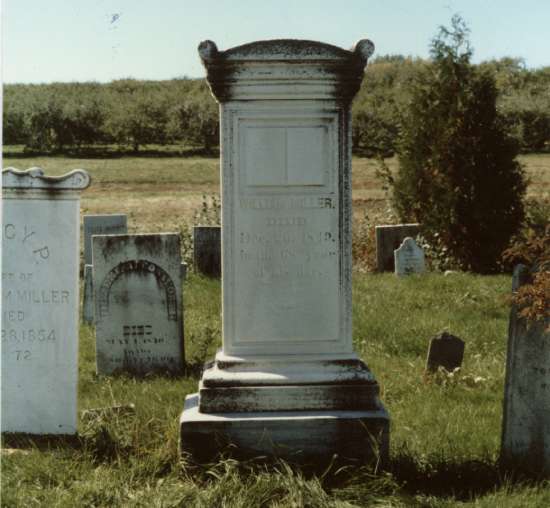 Miller never spoke of a definite time for the Second Advent again, but he continued to hope for that day.21 He formed a group of believers and supported the younger leaders in the movement until he died in 1849.
Miller never spoke of a definite time for the Second Advent again, but he continued to hope for that day.21 He formed a group of believers and supported the younger leaders in the movement until he died in 1849.
Many of his followers gave up their faith in God after the Great Disappointment, while those who didn’t split up into three main groups:22
- Those who believed the date was wrong, but that Christ’s coming would take place soon.
- Those who believed that Christ had come, but in a “spiritual” sense, or not as a physical event.
- Those who believed the date was correct, but the anticipated event was not.
Miller was part of the first group, but it “pained [him] to see a spirit of sectarianism [a strong attachment to a religious sect] and bigotry.”23 He was concerned that some of the people in these groups had gone to extremes in their beliefs.
For this reason, he met with some of his followers at a conference in Albany, New York, on April 23, 1845. There they clarified their beliefs and encouraged one another, but never set a new date for Jesus’ return.24
But how about the Seventh-day Adventists? Did he join them?
What is William Miller’s connection to Adventism?
William Miller’s earnest study of the Bible and the resulting movement was a catalyst for starting the Seventh-day Adventist Church. But he was not a founder of the Church and never became involved with it. In fact, he died in 1849, many years before Adventism’s organization in 1863.
But after October 22, 1844, there was a small group of people who believed that the date had indeed been correct. The event, however, was not. Returning to their Bibles and guided by the Holy Spirit, this group—which included individuals like Ellen G. (Harmon) White, James White, and Joseph Bates—realized that Jesus had moved from the Holy Place to the Most Holy Place of the sanctuary to begin a work of judgment instead.
At the same time, they were learning about other things that had either become de-emphasized or forgotten about over time, such as the seventh-day Sabbath. Many years later, they would form the Seventh-day Adventist Church.
But Miller would not be among their ranks since he didn’t agree with them about Jesus’ work in the sanctuary. Ellen G. White, who became one of the founders of the Adventist Church, wrote that Miller also didn’t accept the Bible’s truth about the Sabbath due to the influence of his fellow workers.25
Nevertheless, through what he started, others further pursued the truths of the Bible.
God used Miller despite his misinterpretation
William Miller was a true man of God who looked forward to Jesus’ return. Though mistaken about the timing of that event, he simply wanted others to be ready, and God used him in powerful ways to bring revival worldwide.
Because of the Great Disappointment, a handful of people began studying their Bibles more deeply. What they discovered led to the Seventh-day Adventist Church—a thriving Christ-centered denomination today. In this way, God took William Miller’s mistake and turned it into a blessing.
- Bliss, Sylvester, and Hale, Apollos, Memoirs of William Miller, (J.V. Himes, 1853), p. 4. [↵]
- Himes, Joshua V., Views of the Prophecies and Prophetic Chronology, Selected from Manuscripts of William Miller with a Memoir of His Life (Boston: Moses A. Dow, 1841), p. 7. [↵]
- Maxwell, C. Mervyn, Tell It to the World, (Pacific Press, Nampa, ID, 1977), p. 9. [↵]
- Miller, William, William Miller’s Apology and Defence, p. 3. [↵]
- “The Battle of Lake Champlain,” Naval History and Heritage Command [↵]
- Maxwell, C. Mervyn, Tell It to the World, (Pacific Press, Nampa, ID, 1977), p. 11. [↵]
- Ibid., p. 12. [↵]
- Ibid., p. 12. [↵]
- Himes, Joshua V., Views of the Prophecies and Prophetic Chronology, Selected from Manuscripts of William Miller with a Memoir of His Life (Boston: Moses A. Dow, 1841), p. 7–14. [↵]
- Maxwell, C. Mervyn, Tell It to the World, (Pacific Press, Nampa, ID, 1977), p. 12. [↵]
- Bliss, Sylvester, and Hale, Apollos, Memoirs of William Miller, (J.V. Himes, 1853), pp. 68–69. [↵]
- Bliss, Sylvester, and Hale, Apollos, Memoirs of William Miller, (J.V. Himes, 1853), pp. 92–99. [↵]
- The full title of the book is “Evidences from Scripture and History of the Second Coming of Christ About the Year A.D. 1843, and of His Personal Reign of 1000 Years”. [↵]
- Maxwell, C. Mervyn, Tell It to the World, (Pacific Press, Nampa, ID, 1977), pp. 16–18. [↵]
- Ibid., p. 19. [↵]
- Miller, William, William Miller’s Apology and Defence, pp. 13, 24. [↵]
- Miller, William, William Miller’s Apology and Defence, p. 25; White, James, Sketches of the Christian Life and Public Labors of William Miller, ch. 16. [↵]
- Miller, William, William Miller’s Apology and Defence, p. 23. [↵]
- Maxwell, C. Mervyn, Tell It to the World, (Pacific Press, Nampa, ID, 1977), p. 35. [↵]
- Miller, William, William Miller’s Apology and Defence, p. 33. [↵]
- White, James, Sketches of the Christian Life and Public Labors of William Miller, ch. 16. [↵]
- Douglass, Herbert, Messenger of the Lord, (Pacific Press, Nampa, Idaho, 1998), p. 134. [↵]
- Miller, William, William Miller’s Apology and Defence, p. 26. [↵]
- White, James, Sketches of the Christian Life and Public Labors of William Miller, p. 344. [↵]
- White, Ellen G., Early Writings (Review and Herald, Washington, D.C., 1882), p. 303. [↵]
Related Articles
More Answers
What Is an Adventist Medical Missionary?
A medical missionary in the Adventist Church is someone who cares for the medical needs of people as a way of showing the love of Jesus. They may travel to another country, or even just serve in their hometown.
Is the Seventh-day Adventist Church Protestant?
With so many Christian denominations, it can be hard to keep track of which ones share which beliefs. Let’s look at the core Protestant beliefs of Adventism.
The True Events Surrounding the Birth of Jesus
Jesus’ birth involved many strange events: a pregnant virgin, a stable birth, angels appearing to shepherds, and wealthy visitors. These help us understand His supernatural yet incredibly humble life.
Are Seventh-day Adventists Evangelicals?
According to its origins and definition, evangelicalism is about following Jesus and the Bible and sharing the Gospel through the way we live our lives. Adventists wholeheartedly harmonize with these principles.
Could Anything Keep Me from Becoming an Adventist?
We are each saved through Christ. But when it comes to church membership, are there certain beliefs or expectations to become an Adventist?
Do Seventh-day Adventists Have “Rules”?
We uphold principles we believe will help us maintain a closer relationship with Jesus and His Word. Learn how these principles guide Adventist lifestyles.
Your Comprehensive List of Ellen G. White’s Visions
Ellen White—an author, health-reform advocate, Bible scholar, and one of the most influential founding figures of the Seventh-day Adventist Church—was blessed by the Holy Spirit with the spiritual gift of prophecy (1 Corinthians 14; Romans 12:6-8). During her lifetime, she received direct guidance and inspiration from God in several different ways.
Do Seventh-day Adventists Have “Rules” For Marriage?
Around the world, many cultures and religions have various marriage traditions, expectations, or even rules when it comes to choosing a partner, planning the wedding, extended family logistics, or a number of other things.
An In-Depth List of the Prophecies About Jesus
How many prophecies of Jesus are in the Old Testament?
Can a Seventh-day Adventist Marry a Non-Adventist?
Yes. Seventh-day Adventists are not under any official rules that dictate who they can or cannot marry. This is a personal, life-altering decision between the couple and God.
What Adventists Believe About Alcohol and Tobacco Use
The Seventh-day Adventist Church has historically discouraged the use of alcohol and tobacco. Even before the church started in 1863, its leaders were realizing the negative effects of these substances.
What Does the Bible Say About Aliens and UFOs?
In 1938, aliens and UFOs were the subject of a mass prank. Around Halloween, Orson Welles performed a radio adaptation of H.G. Wells’ War of the Worlds. This ended up causing a panic throughout the United States—many people took it to mean that aliens had really attacked New Jersey.
What Do Adventists Believe About the Authority of the Bible?
Learn how one really old book (the Bible) is the sole foundation for all Seventh-day Adventist beliefs.
Is the Soul Immortal? Exploring What Adventists Believe
Based on the way the Bible describes humanity in comparison to God and angels, Seventh-day Adventists believe souls are not something you have, but something you are.
Jewelry—Why Do Many Seventh-day Adventists Choose Not to Wear It?
If you walk into a Seventh-day Adventist church service, you might notice that many people aren’t wearing earrings, bracelets, necklaces, or sometimes even wedding rings.
How the Bible Defines Love
Everyone talks about it, but do we really know what it means?
Why Does God Allow Suffering?
Poverty, genocide, a school shooting. A tsunami or earthquake that wipes out thousands of lives and leaves behind mourning family members.
International Pathfinder Camporee
Youth aged 10-15 in the Adventist Church’s global Pathfinder program look forward to the International Camporee every 5 years. This event brings together Pathfinders from around the world for exciting activities.
What Is Peter’s Ladder of Virtues, and How Does It Work?
Peter’s ladder of virtues is a phrase that refers to eight characteristics to be developed as a person grows in their relationship with Jesus Christ. It can be found in 2 Peter 1.
How Adventists interpret Bible prophecy
Bible prophecy conjures up a variety of emotions in people. For some, it feels exciting or mysterious.
What Counts as “Work” on the Sabbath?
God designed the Sabbath day to be a 24-hour period when we could pause and enjoy the goodness of His creation. We do this by putting aside our regular work so we can focus on spending time with Him and appreciating what He’s created (Exodus 20:8-11).
Moviegoers’ Guide to The Hopeful: The Facts Behind the Film
Learn where and when you can watch The Hopeful and how to get tickets. Already seen it? We’ll uncover the real story that inspired this film.
Protestant Reformation
Martin Luther. The 95 Theses. The Reformation. The Protest. Maybe you’ve heard these terms and wondered, What’s the big deal?
Ellen G. White’s Lasting Legacy
Ellen G. White is a well-known name among Seventh-day Adventists, but she also made an impact in many other parts of history, aside from being a co-founder of the Adventist Church.
Ellen G. White’s Challenging Health Journey
When it comes to lifelong struggles with health, Ellen White is no stranger. In fact, health challenges set the tone for her life early on—years before she was involved in co-founding the Seventh-day Adventist Church.
“What Was Ellen and James White’s Marriage Like?”
Ellen and James White, cofounders of the Seventh-day Adventist Church, met and married under somewhat unusual circumstances. But it’s a sweet story of partners in ministry becoming partners in life. And their married life continued to center on furthering the spread of the gospel together.
What Do Adventists Believe About the Mark of the Beast and 666?
It’s a popular topic, especially during tumultuous times. When everything around you feels chaotic, it’s easy to wonder about the end of the world, and topics like the mark of the beast, as mentioned in Revelation 13, can stir up uneasiness.
What is the Ellen G. White Estate?
What is the Ellen G. White Estate?Ellen G. White’s contributions to the formation and growth of the Seventh-day Adventist Church are an integral part of its history. As a significant co-founder of the denomination, her writings provided millions of people with...
Getting to Know Mark—Gospel Writer and Follower of Jesus
Mark (whose full name was John Mark) had a lot of roles in the New Testament: he was an early follower of Jesus Christ, he traveled the Mediterranean as a Christian missionary, and he wrote a book of the Bible.
Didn’t find your answer? Ask us!
We understand your concern of having questions but not knowing who to ask—we’ve felt it ourselves. When you’re ready to learn more about Adventists, send us a question! We know a thing or two about Adventists.

